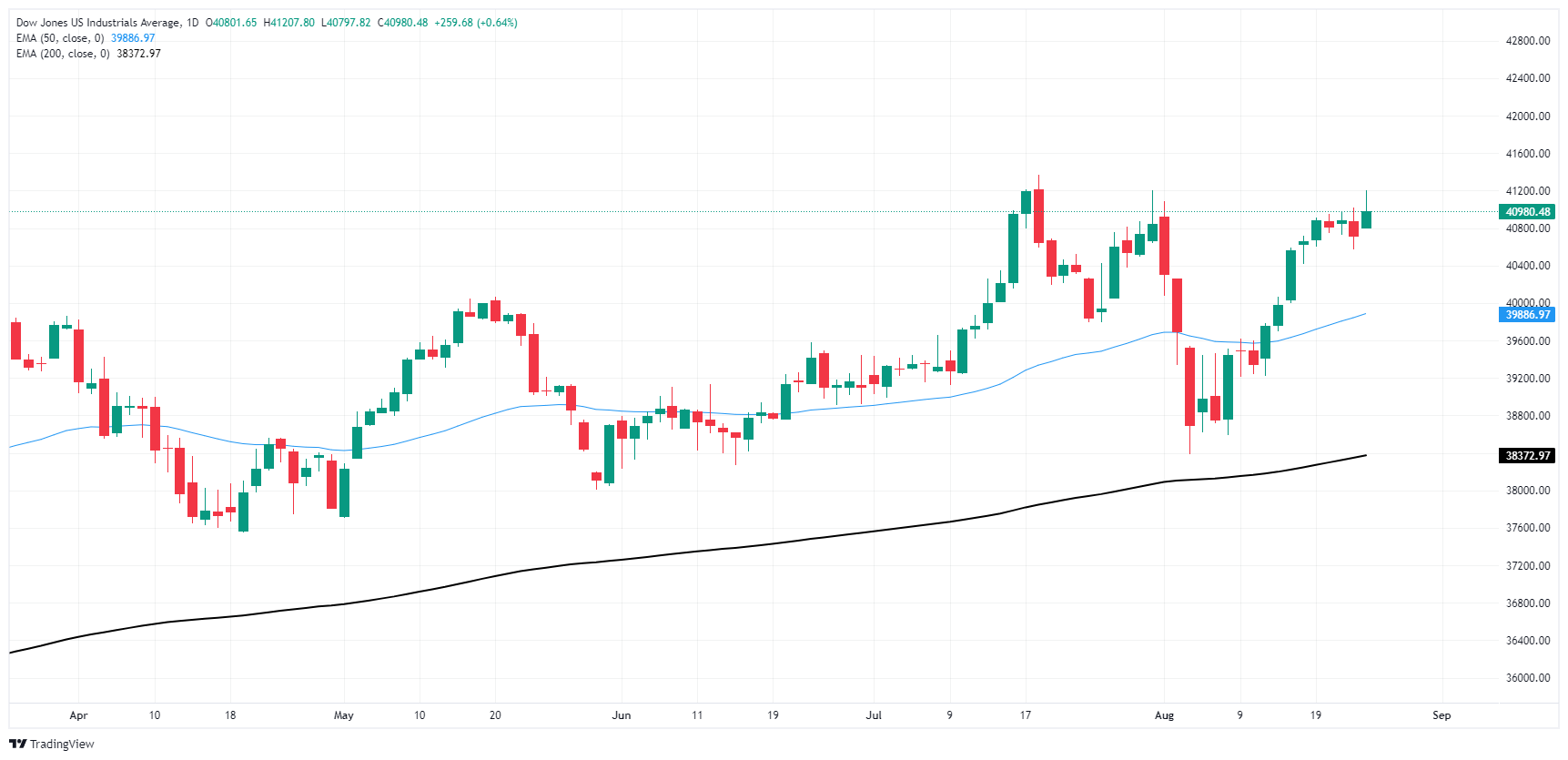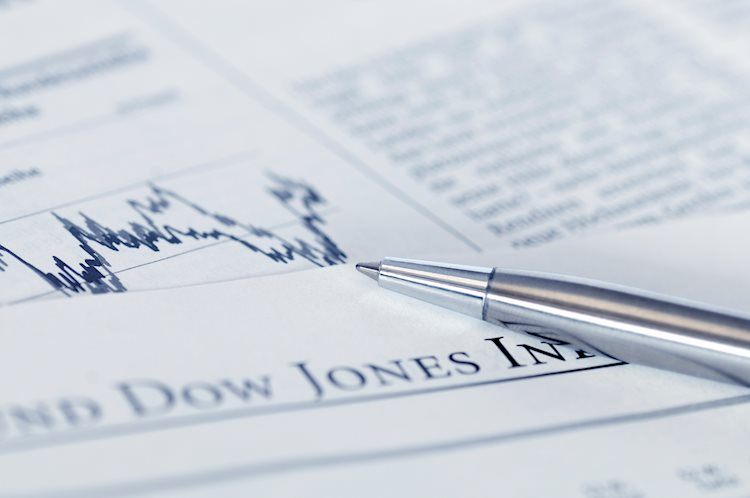- The Dow Jones rallied to 41,200.00 after Fed officials agreed its time to cut rates.
- Equities have immediately moved on to guessing how many rate cuts in 2024.
- Rate markets see 100 bps in cuts by 2024 year-end.
The Dow Jones Industrial Average (DJIA) lurched over 350 points higher on Friday after the Federal Reserve (Fed) gave a nod of the head to upcoming rate cuts. Several Fed policymakers appeared before markets to signal a long-awaited shift in policy stance that markets have been rallying for since at least last December, when investors had initially priced in an eye-watering six rate cuts for over 200 bps by the end of 2024.
Read more: Jerome Powell repeats timing and pace of rate cuts will depend on data
Fast-forward to late August, and traders are now grappling with whether or not the Fed’s September rate call will be for 25 or 50 bps. According to the CME’s FedWatch Tool, rate markets are pricing in roughly three-to-one odds of a double cut on September 18, with the rest of the rate board still committed to a single quarter-point cut. Bets of a 50 bps opening rate trim in September rose after Fed Chairman Jerome Powell, while speaking at the Jackson Hole Economic Symposium on Friday, openly admitted that the time has finally come for the US central bank to begin pushing reference rates down.
Dow Jones news
Despite a broad topside pivot in market sentiment on Friday, roughly a third of the Dow Jones index is still grappling with the low side. Procter & Gamble Co. (PG) tumbled around one percent, falling to $168.41 per share after it was revealed that COO Shailesh Jejurikar sold nearly a third of his stake in the company. On the bullish side of the board, Dow Inc. (DOW) rallied 2% to $53.62.
Dow Jones price forecast
The Dow Jones managed to tap 41,200.00 for the first time since late July amidst a broad rally in equities. With the index continuing to test higher ground, the DJIA is on pace to again challenge all-time highs priced in at 41,371.38 set in mid-July.
Despite a firm bullish stance, bidders are at risk of running out of momentum with price action strung along the high side. The Dow Jones continues to trade well above the 200-day Exponential Moving Average (EMA) at 38,187.93, and a near-term pullback will see the Dow Jones skid back into the 50-day EMA rising into the 40,000.00 major price handle.
Read more Dow Jones news: Intel sinks 6% as German factory investment becomes less certain
Dow Jones daily chart
Fed FAQs
Monetary policy in the US is shaped by the Federal Reserve (Fed). The Fed has two mandates: to achieve price stability and foster full employment. Its primary tool to achieve these goals is by adjusting interest rates. When prices are rising too quickly and inflation is above the Fed’s 2% target, it raises interest rates, increasing borrowing costs throughout the economy. This results in a stronger US Dollar (USD) as it makes the US a more attractive place for international investors to park their money. When inflation falls below 2% or the Unemployment Rate is too high, the Fed may lower interest rates to encourage borrowing, which weighs on the Greenback.
The Federal Reserve (Fed) holds eight policy meetings a year, where the Federal Open Market Committee (FOMC) assesses economic conditions and makes monetary policy decisions. The FOMC is attended by twelve Fed officials – the seven members of the Board of Governors, the president of the Federal Reserve Bank of New York, and four of the remaining eleven regional Reserve Bank presidents, who serve one-year terms on a rotating basis.
In extreme situations, the Federal Reserve may resort to a policy named Quantitative Easing (QE). QE is the process by which the Fed substantially increases the flow of credit in a stuck financial system. It is a non-standard policy measure used during crises or when inflation is extremely low. It was the Fed’s weapon of choice during the Great Financial Crisis in 2008. It involves the Fed printing more Dollars and using them to buy high grade bonds from financial institutions. QE usually weakens the US Dollar.
Quantitative tightening (QT) is the reverse process of QE, whereby the Federal Reserve stops buying bonds from financial institutions and does not reinvest the principal from the bonds it holds maturing, to purchase new bonds. It is usually positive for the value of the US Dollar.
